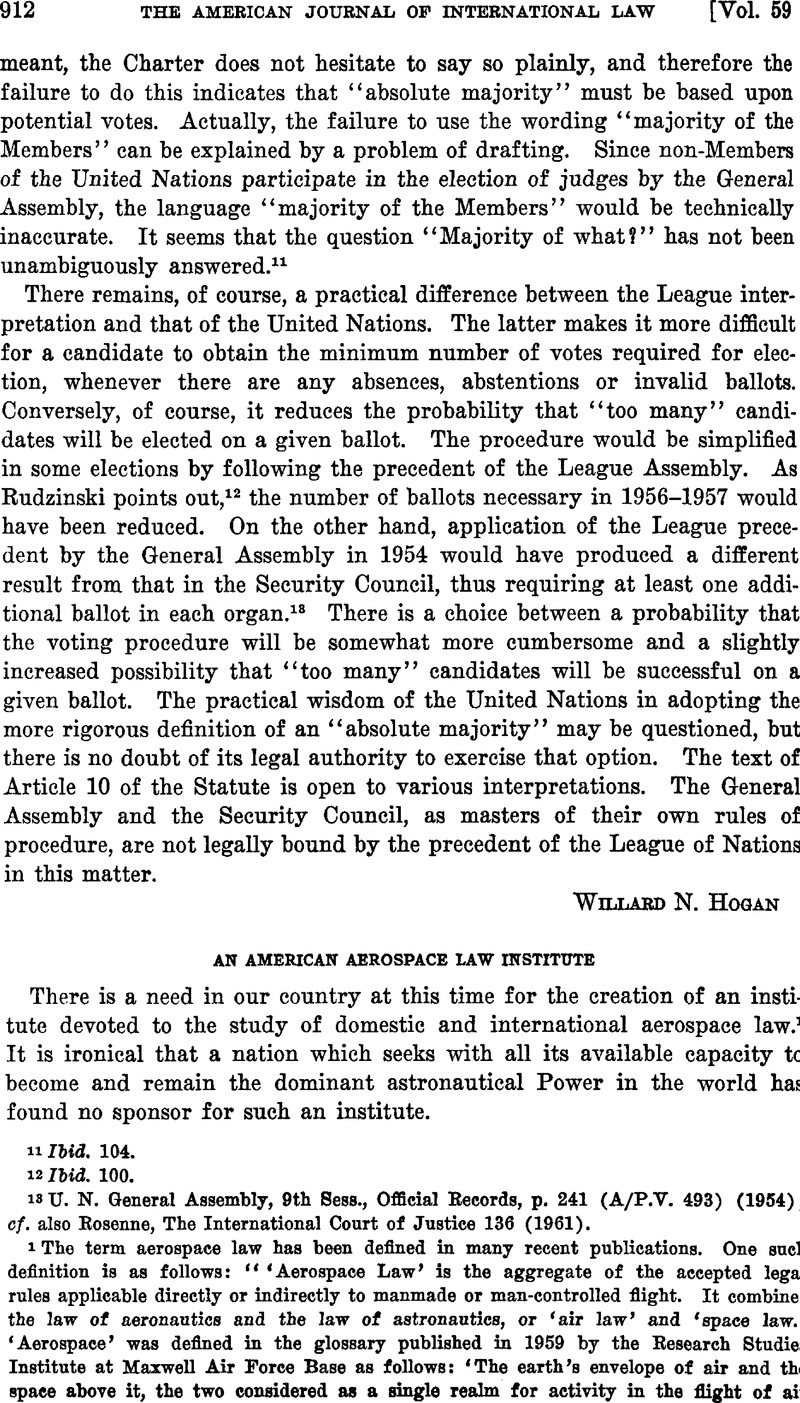No CrossRef data available.
Published online by Cambridge University Press: 28 March 2017

1 The term aerospace law has been denned in many recent publications. One such definition is as follows: “ ‘Aerospace Law’ is the aggregate of the accepted legal rules applicable directly or indirectly to manmade or man-controlled flight. It combines the law of aeronautics and the law of astronautics, or ‘air law’ and ‘space law.’ ‘Aerospace’ was defined in the glossary published in 1959 by the Research Studies Institute at Maxwell Air Force Base as follows: ‘The earth's envelope of air and the space above it, the two considered as a single realm for activity in the flight of air vehicles and in the launching, guidance and control of ballistic missiles, earth satellites, dirigible space vehicles, and the like.’ The terms ‘aerospace engineering’ and ‘aerospace sciences’ are now widely used to indicate the indivisible and inclusive character of engineering and scientific functions related to flight at any altitude.” (Cooper, J. C, “Aerospace Law: Progress in the TJN,” Astronautics and Aerospace Engineering, March, 1964, p. 42.)